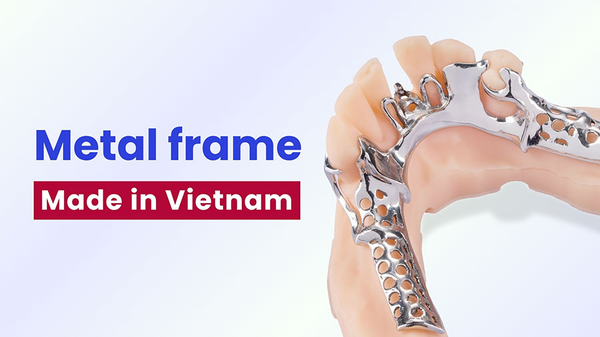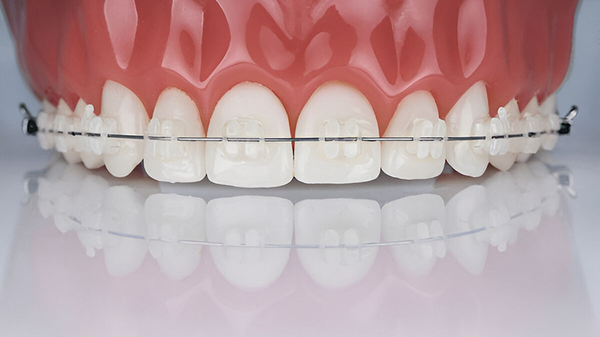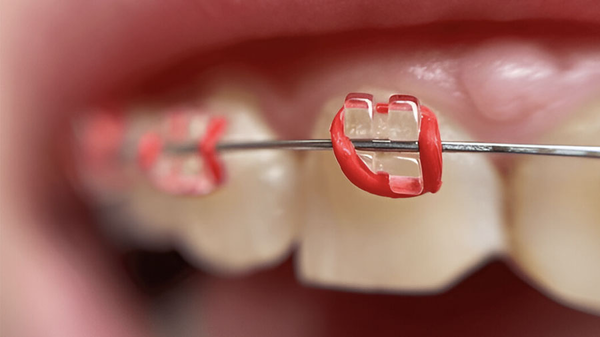Discover how fiber-reinforced polymer brackets improve orthodontic treatments with superior strength, aesthetics, and clinical performance.

Table of contents [Show]
Introduction to Fiber-Reinforced Polymer Brackets
Fiber-reinforced composites have revolutionized orthodontic bracket technology, offering a unique combination of mechanical strength and aesthetic appeal. These materials integrate polymer matrices with reinforcing fibers, creating brackets that are lightweight, durable, and visually discreet. As an alternative to traditional metal and ceramic brackets, fiber-reinforced polymer brackets have gained traction among orthodontists and patients seeking efficient and aesthetic treatment solutions.
This article explores the types, mechanical properties, clinical performance, and future directions of fiber-reinforced polymer brackets, shedding light on their advantages over conventional materials.
Types of Fiber Reinforcements
Fiber reinforcement is a key factor in enhancing the performance of polymer brackets. By embedding fibers into the polymer matrix, manufacturers can significantly improve the brackets' mechanical properties and durability.
Glass Fiber Reinforcement
Glass fiber-reinforced polymer brackets are among the most researched configurations in orthodontics. These brackets incorporate long glass fibers into the polymer matrix, resulting in:
Improved Fracture Resistance: Superior resistance to mechanical failure compared to unreinforced polymer brackets.
Aesthetic Appeal: Translucent properties that blend seamlessly with natural teeth.
Studies have shown that glass fiber reinforcement enhances the structural integrity of polymer brackets, making them a viable option for patients seeking both functionality and aesthetics.
Carbon Fiber Composites
Carbon fiber-reinforced polymer brackets are known for their exceptional strength-to-weight ratio. These brackets offer:
Superior Mechanical Properties: High tensile strength and stiffness.
Discreet Appearance: Aesthetic advantages with a sleek, modern look.
Recent advancements in carbon fiber composites have enabled the development of orthodontic brackets that combine durability with a lightweight structure, making them ideal for demanding clinical applications.
Mechanical Properties
Fiber-reinforced polymer brackets are designed to withstand the mechanical forces encountered during orthodontic treatment. Key properties include:
Fracture Strength and Toughness
The addition of fibers significantly enhances the fracture strength and toughness of polymer brackets. Experimental studies have demonstrated that fiber-reinforced brackets are more resistant to mechanical failure under clinical loading conditions compared to conventional polymer brackets.
Flexural Properties
Flexural strength is critical for orthodontic brackets, as they must endure constant stress from archwires and tooth movement. Fiber-reinforced composite brackets exhibit:
Higher Flexural Strength: Greater resistance to bending forces.
Durability: Reduced risk of deformation during treatment.
Load to Failure Characteristics
Fiber reinforcement improves the load-bearing capacity of polymer brackets, allowing them to:
Withstand Higher Loads: Distribute stress more effectively across the bracket structure.
Minimize Failure Risks: Provide reliable performance throughout treatment.
Clinical Performance Considerations
When evaluating fiber-reinforced polymer brackets, clinicians must consider factors such as aesthetics, bonding strength, and long-term performance.
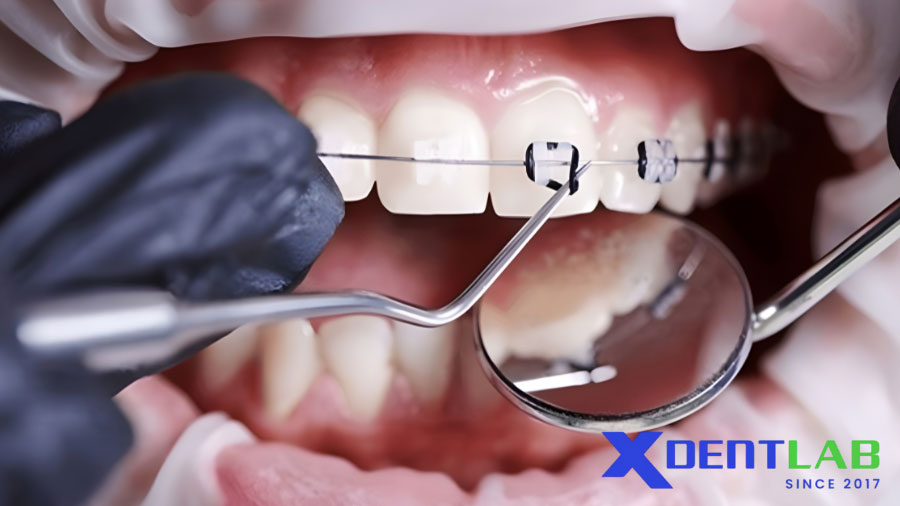
Color Stability
For aesthetic brackets, maintaining color stability is essential. Research has shown that glass fiber-reinforced polymer brackets demonstrate excellent resistance to discoloration caused by:
Ultraviolet Light: Minimal fading over time.
Food and Beverages: Reduced staining from common dietary sources.
Bonding Characteristics
The bonding strength of fiber-reinforced polymer brackets is critical for their clinical success. Surface modifications, such as roughening or coating, can enhance adhesion to tooth enamel, ensuring:
Secure Attachment: Reliable bond strength during orthodontic treatment.
Reduced Debonding Risks: Improved retention throughout the treatment period.
Recent Advances and Future Directions
Fiber-reinforced polymer brackets are at the forefront of orthodontic innovation, with ongoing research focused on improving performance and expanding clinical applications.
3D Printing Applications
The integration of 3D printing technology has enabled the production of customized fiber-reinforced brackets with:
Precise Fiber Orientation: Optimized mechanical properties tailored to individual patients.
Cost Efficiency: Reduced manufacturing costs for custom designs.
Biocompatibility and BPA-Free Formulations
Modern fiber-reinforced polymer brackets are designed with patient safety in mind, featuring:
BPA-Free Materials: Avoiding potentially harmful chemicals.
Biocompatibility: Minimal risk of irritation or allergic reactions.
Functionally Graded Materials
The concept of functionally graded materials allows for:
Optimized Fiber Distribution: Enhanced mechanical performance in specific areas of the bracket.
Improved Aesthetics: Seamless blending with natural teeth.
Comparative Analysis with Traditional Materials
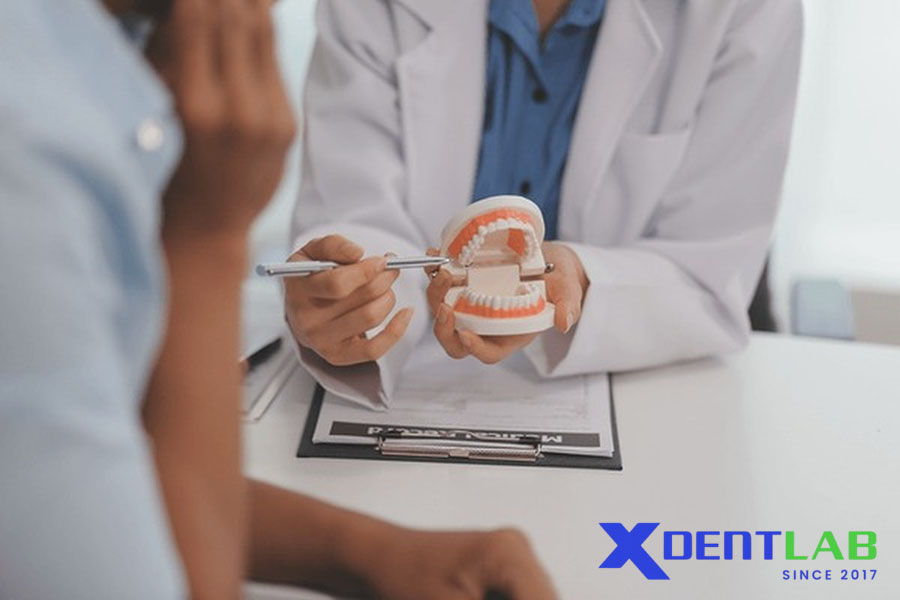
Fiber-reinforced polymer brackets offer distinct advantages over traditional orthodontic materials:
Advantages: Aesthetic appeal, lightweight structure, and adequate mechanical strength.
Limitations: Slightly lower fracture resistance compared to metal brackets.
Versus Ceramic Brackets
Advantages: Better fracture toughness and reduced risk of enamel damage during debonding.
Limitations: Less translucent than high-quality ceramic brackets.
Versus Conventional Polymer Brackets
Advantages: Superior mechanical properties, including higher torque resistance and reduced fracture rates.
Limitations: Higher manufacturing costs due to fiber reinforcement.
Manufacturing Considerations
The production of fiber-reinforced polymer brackets requires precise control over:
Fiber Orientation: Ensuring uniform strength and durability.
Volume Fraction: Balancing fiber content for optimal performance.
Matrix-Fiber Interface: Enhancing adhesion between fibers and the polymer matrix.
Advanced manufacturing techniques, such as mechanofusion, have been explored to create composite materials with improved mechanical and bioactive properties.
Conclusion
Fiber-reinforced composites represent a significant advancement in polymer bracket technology, offering a balance between aesthetics and mechanical performance. With innovations in 3D printing, biocompatible materials, and functionally graded designs, these brackets are poised to become a staple in modern orthodontics.
For dental practices seeking high-quality solutions, fiber-reinforced polymer brackets provide an excellent option that meets both clinical and aesthetic demands. As XDENT LAB continues to innovate and deliver cutting-edge dental lab services, our commitment to quality and compliance ensures that we remain a trusted partner for dental practices worldwide.
About XDENT LAB
XDENT LAB specializes in Lab-to-Lab Full Service from Vietnam, offering FDA and ISO approved dental solutions tailored to U.S. market standards. With expertise in removable and implant solutions, XDENT LAB combines state-of-the-art technology and certified technicians to deliver consistent, high-quality products. Contact us today to learn more about our dental lab outsourcing services.
XDENT LAB is an expert in Lab-to-Lab Full Service from Vietnam, with the signature services of Removable & Implant, meeting U.S. market standards – approved by FDA & ISO. Founded in 2017, XDENT LAB has grown from local root to global reach, scaling with 2 factories and over 100 employees.. Our state-of-the-art technology, certified technicians, and commitment to compliance make us the trusted choice for dental practices looking to ensure quality and consistency in their products.

Our commitments are:
100% FDA-Approved Materials.
Large-Scale Manufacturing, high volume, remake rate < 1%.
2~3 days in lab (*digital file).
Your cost savings 30%.
Uninterrupted Manufacturing 365 days a year.
Contact us today to establish a strategy to reduce operating costs.
--------❃--------
Vietnam Dental Laboratory - XDENT LAB
🏢 Factory 1: 95/6 Tran Van Kieu Street, Binh Phu Ward, Ho Chi Minh City, Vietnam
🏢 Factory 2: Kizuna 3 Industrial Park, Can Giuoc Commune, Tay Ninh Province, Vietnam
☎ Hotline: 0919 796 718 📰 Get detailed pricing
Share this post:

